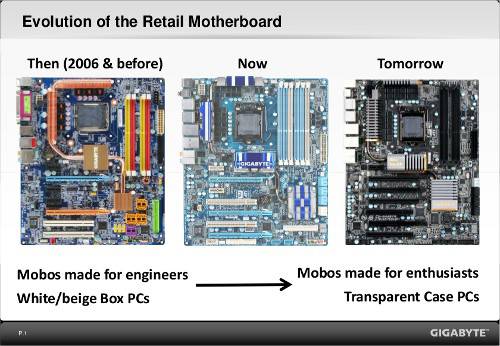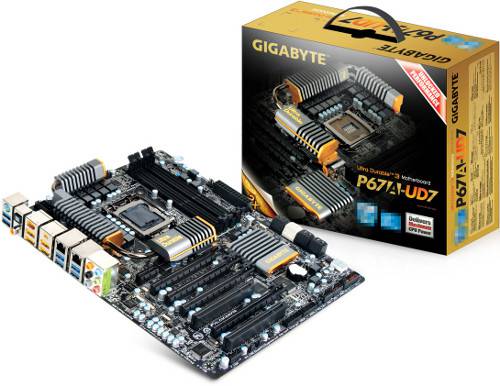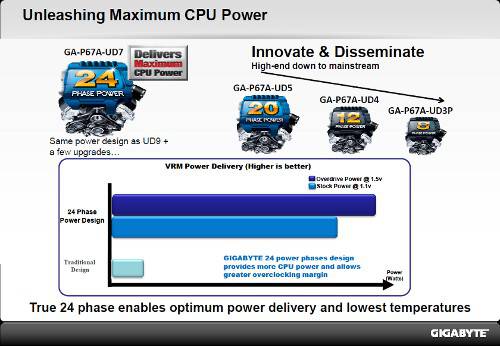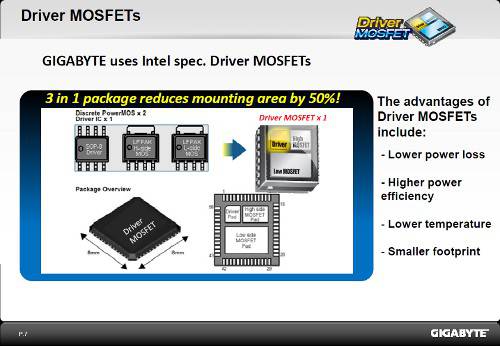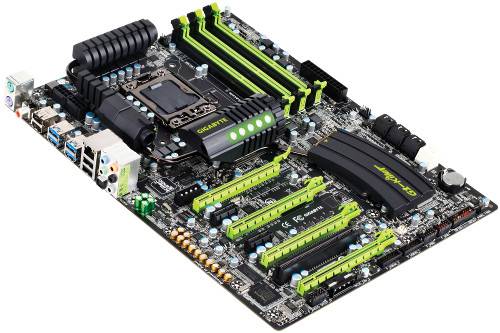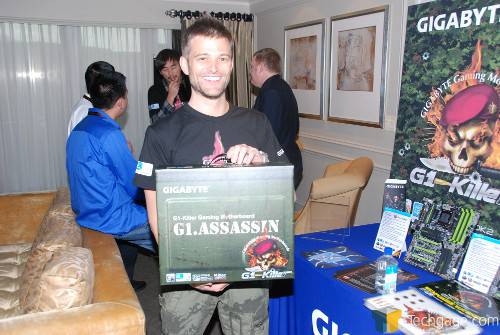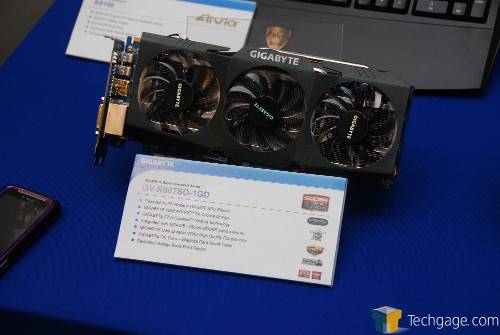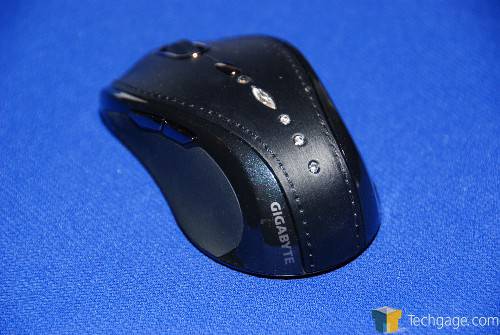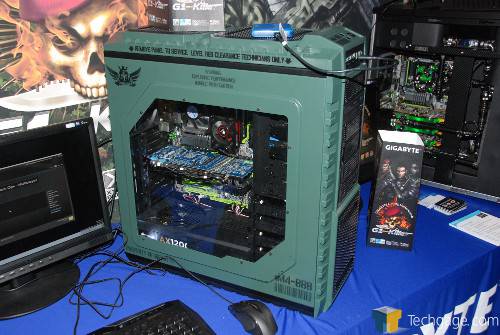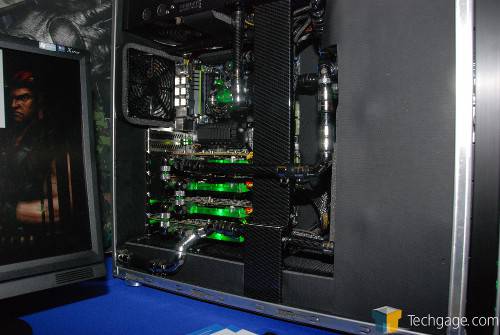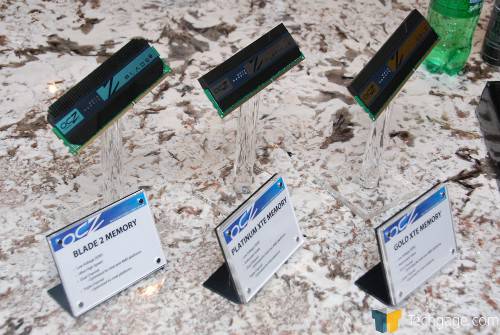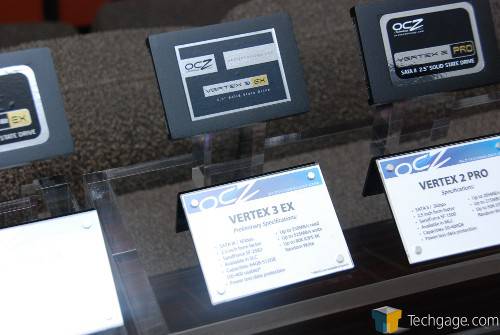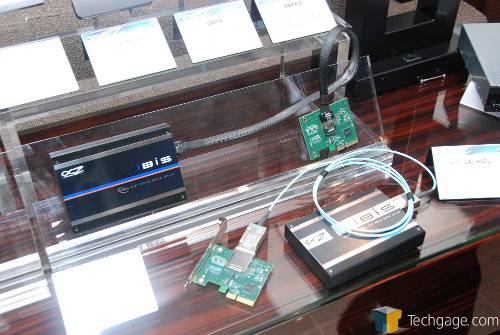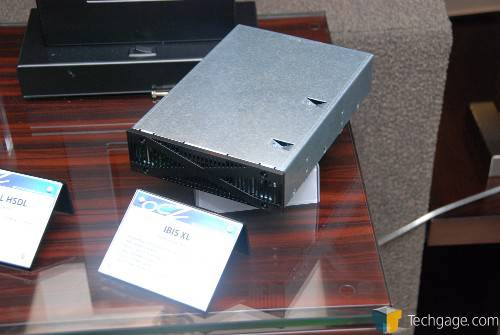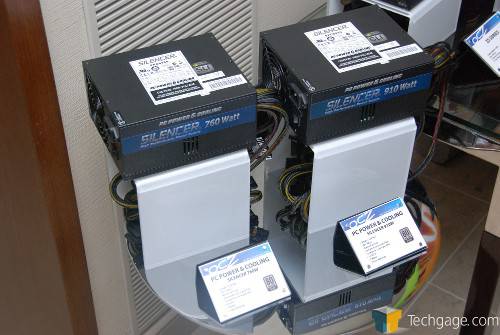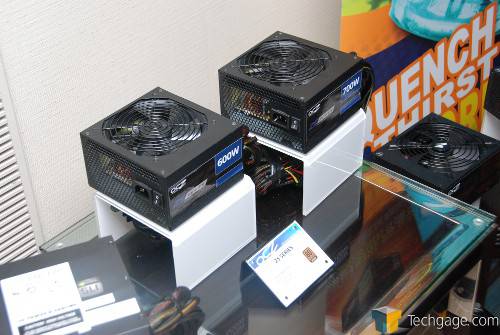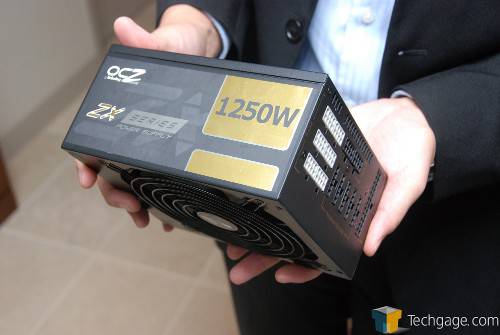Prior to CES 2011's official start, Corsair hosted a press conference in the classy V Bar inside of the Venetian hotel in Las Vegas. There, we were given a brief run-down of the company's success over the years, and also what's on the horizon.
For those who might not remember, Corsair began out as a company which created Level 2 Cache add-in modules for the PC, which of course happened long before the L2 Cache became a part of the CPU itself (yes, it's true).
Fast-forward to the year 2000 and the company began releasing overclocking modules, although at the time, overclocking was still an extreme niche. In fact, it hadn't even considered overclocking or knew what it was, until enthusiasts said that its modules were great for it. History was made.
Continuing onto 2003, Corsair released its hugely popular PRO line-up, and in 2005, the XPERT LED-equipped modules were released. Then in 2006, power supplies were introduced into the company's portfolio, and since then, little has begun to slow down. Just last year, it began to get into audio (headsets) and also released professional-grade PSUs.
So what's up for 2011? At the event, several products were unveiled, all of which we'll tackle here. No new categories were introduced, but follow-up products to newer categories were, including the SP2200 and SP2500 2.1 speaker sets.
Corsair SP2500 and SP2200 2.1 Speaker Sets
As the numbers imply, the SP2500 is the higher-end of the two, to be priced at around ~$239.99. Sounds expensive for the regular Corsair purchaser, but make no mistake, this is a higher-end set of speakers. Despite being just a 2.1 set, it outputs a total of 232W RMS, which is far, far more than most cheapie 5.1 sets.
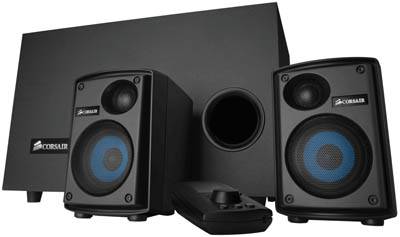
A common complaint of these higher-end setups is that they might be good for gaming or movies/music, but rarely great for both. Corsair has tried to work around this by using a high-quality digital signal processor to shape and properly balance the audio, and if the effect doesn't suit you, you can of course change it.
The SP2500 includes two-way bi-amplified satellites, which uses ferrofluid-cooled silk dome tweeters and 3-inch mid-range drivers, along with mesh metal grilles for physical appeal. Each one of these sats deliver 56W RMS, which is 16W for the tweeter and 40W for the mid.
The woofer uses an 8-inch driver with durable rubber surround, a bridged dual 60W class D amplifier for a total power output of 120W.
Another perk of the SP2500 is a robust remote control with allows you to alter the EQ and program modes, all of which Corsair has manually created to best-suit each use. You can of course alter the EQ to your heart's content, but you might just be fine with the company's configurations.
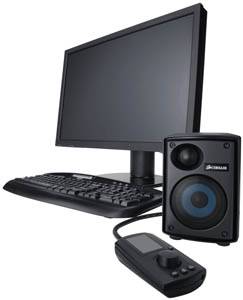
The SP2200 speaker set is similar to the SP2500, but much less powerful and doesn't feature the remote. This set outputs at 46W and is deigned to be affordable, but also a major upgrade to most of the speaker sets some gamers might be using. It's also priced at a more accessible price-point, ~$99.
Corsair HS1A Headset
A couple of months ago, Jamie took a look at Corsair's brand-new gaming headset, the HS1, and had quite a bit of praise for it in the end. The HS1A is not an upgrade per se, but removes the USB connector and gives us a regular audio jack, allowing us to take advantage of the add-in audio cards in our PC for even better audio.
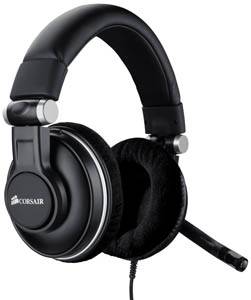
You'd imagine (or at least I would) that the USB model would cost more than the one with a regular audio port, but no. The HS1A will cost about $10 more than the HS1, when it it becomes available this quarter.
Corsair Graphite 600T
Care for a white chassis with some internal appeal? Corsair's Graphite 600T special edition might just be for you. It takes all of what made the original appealling to enthusiasts and turned it into a white glossy offering.
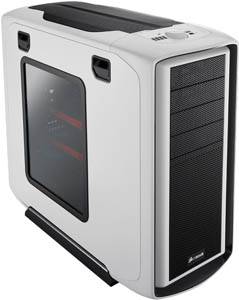
In addition to that minor color change, there are black accents on key areas and also a mesh window. The chassis will become available later this month and should retail for around $160.
Corsair H60 Liquid CPU Cooler
At Techgage, we've been using the Corsair H50 CPU cooler in quite a number of our test machines, so it was of great interest to see the H60 announced. But as we began listening, it became clear that there's a lot more than meets the eye. This wasn't entirely a Corsair developed design, but rather a result of a partnership with CoolIT Systems.
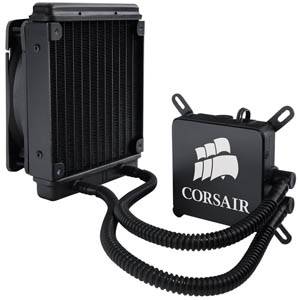
As I mentioned in our news section, this partnership marks the end of CoolIT's offering of products to consumers under its own name. Going forward, the company will be working with others to develop products and also focus on the enterprise market.
The H60 uses a large copper cold plate to transfer heat more effectively and uses a "split-flow" design to cover more of the heatsink area when passing water through. Because the block is constructed from a single piece of copper, you can expect the best performance possible from such a unit. The cooler will become available soon, although I am unsure of its price.
Corsair Graphite 650D
Building off of the massive success of the 800D released last fall, Corsair has followed-up with the 650D mid-tower. It features clean lines, a builder-friendly design, aluminum and steel construction, and as Corsair states, it's a mid-tower on the outside but a full-tower on the inside.
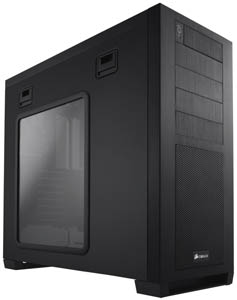
The chassis has a 200mm front-mounted intake fan and a top-mounted exhaust fan, a generous CPU backplate cut-out, toolless drive bays, 8 PCIe expansion slots, and of course, the signature cable-routing system that first launched on the 800D.
This chassis will become available in the early spring and retail for $200.
Corsair Link & Final Thoughts
Wrapping up the press event, Corsair talked a bit about "Corsair Link", which is a software/hardware platform that allows a user to monitor a variety of system components from within Windows. This could include RAM temperatures, voltages, hard drive SMART information and more. It would of course work best with Corsair's own hardware, but it is designed to work with others as well.
Corsair Link is still in development, so there are no screenshots or a ton of information out about it. This kind of thing has been attempted before and hasn't had major success (NVIDIA tried it), so we'll see where Corsair's try will go.
Corsair's unveilings were quite interesting, with the SP2500 taking the cake for me. I love higher-performance audio, and it's clear that Corsair has put in the time and effort to make this one a winner. I can't wait to be able to hear it live in person.
 Celestron's stylish and versatile VistaPix IS70 Digital Spotting Scope lets you see and capture the action closer than ever before. This fully integrated unit consists of a high-power 70mm spotting scope with 14x magnification combined with a dual-power, side-mount 3.1-megapixel digital camera with 6x digital zoom. The result is an amazingly efficient, high-performance product that allows you to view, capture and save vibrant, high-resolution images and video from a distance. A 2-inch color LCD screen previews the image and includes a digital focus meter to ensure sharp shots. A video cable and shutter cables and easy-to-install VistaPix software are included in the package, so you can view your video and images on your television or PC.
Celestron's stylish and versatile VistaPix IS70 Digital Spotting Scope lets you see and capture the action closer than ever before. This fully integrated unit consists of a high-power 70mm spotting scope with 14x magnification combined with a dual-power, side-mount 3.1-megapixel digital camera with 6x digital zoom. The result is an amazingly efficient, high-performance product that allows you to view, capture and save vibrant, high-resolution images and video from a distance. A 2-inch color LCD screen previews the image and includes a digital focus meter to ensure sharp shots. A video cable and shutter cables and easy-to-install VistaPix software are included in the package, so you can view your video and images on your television or PC.










